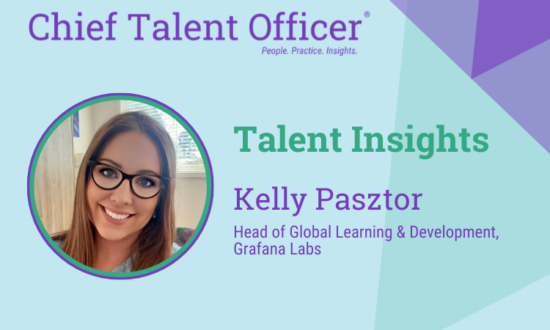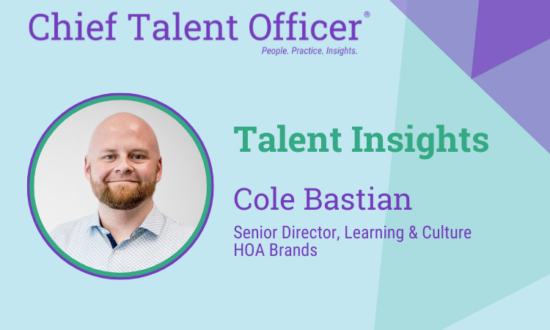In today’s increasingly competitive job market, employers face added pressure to retain top talent. Unfortunately, most employees don’t think of their own organizations when looking for a new opportunity. A June 2021 Gartner survey of 3,000 candidates globally found only 33 percent of employees who searched for a new opportunity in the past 12 months searched internally first.
Creating a strong internal mobility strategy is critical – internal mobility helps organizations maximize their recruiting budgets, improves employee performance and helps mitigate high turnover.
While most organizations (88 percent) are investing in career pathing technologies to facilitate internal mobility, more than half of HR leaders (52 percent) say the lack of capable technology and tools poses a significant or moderate barrier to internal mobility at their organizations.
To overcome obstacles to internal mobility, HR leaders should leverage technology in four ways:
- Use a growth-based framework to drive career development
Employees struggle more than external candidates to find the right roles and convey their interests – and only half of employees report being aware of internal opportunities.
To increase visibility into relevant future roles, HR should leverage technology to create an internal website that matches employees to positions based on similarities to their current job requirements.
For example, one leading North American insurance company implemented this framework and filtered results to only display jobs two levels above or one level below the employees’ current role as well as lateral moves at the same level.
This approach acknowledges the career planning process for those interested and helps communicate opportunities in a concise manner – ensuring employees don’t receive unrealistic or irrelevant job alerts.
Employees are also able to review job matches after a self-inventory of their interests and skills, which ensures a realistic mindset for pursuing suitable roles in the career planning process. Within a month of launching this website, nearly half of all the employees had visited the platform, with 65 percent being repeat users.
- Tailor role recommendations to dissuade talent hoarding
Gartner research shows 10 percent of employees were prevented from applying to internal openings in 2021 due to manager interventions. To curb this tendency of managers to hoard high-quality talent, HR leaders should leverage technology to reduce the reliance on managers during the career pathing process.
For instance, one leading financial institution created an “Opportunity” platform that shares tailored job recommendations and benchmarks with employees directly. This platform provides targeted data with gamification, employee feedback and a series of advanced search filters to increase transparency. The platform also analyzes usage patterns to boost accuracy.
More importantly, this tool helps employees visualize career paths as it demonstrates the trajectory of previous employees in their current role. Within a year of launching, the platform held a 92 percent satisfaction rate among employees who used it regularly.
- Create internal gigs to increase skills development
A rapidly changing talent landscape means certain employees are unsure of how to develop in-demand skills.
To connect employees to upskilling opportunities, a Canadian financial services company created an internal marketplace that aligns employees to projects and teams for part-time, short-term work assignments, also known as “gigs.” Gigs are easy for employees to start and managers to support due to their low time commitment.
To launch this initiative, managers were tasked with breaking down work into its smallest form of value to turn it into different gig opportunities. Then, talent management leaders posted gigs on the skills marketplace, allowing employees to evaluate the work according to their upskilling needs.
This marketplace approach reduces skills gaps among the institution and allows employees to do smaller, impactful projects while remaining in their current roles – boosting job security while expanding their skills base.
After the marketplace’s launch in 2021, 90 percent of all posted gigs were filled.
- Create bridges to expand career networks
Hybrid work environments can narrow internal networks, making it difficult for employees to explore potential career paths.
To solve this issue, a North American digital communications company created a platform for employees to network, hear insights from senior leaders and explore development in role-based groups. This platform exposes employees to success stories of how company leaders have utilized internal mobility and share guidance from experts on the recommended skills that are growing in value.
In addition, when the organization recognized some employees lacked visibility or confidence to chart their own career paths, they enabled the platform to also allow staff to discuss career moves in lateral community-of-practice groups.
Through these features, employees build relationships and gain unique perspectives about the organization. As a result, 79 percent of employees reported the platform made them more engaged in the business.
To create robust career paths, HR leaders should implement technology with the capacity to:
- Match employees with skill adjacent roles.
- Reduce employee dependence on managers when exploring career moves.
- Create a marketplace for internal opportunities.
- Build virtual bridges for cross-organizational connections.















